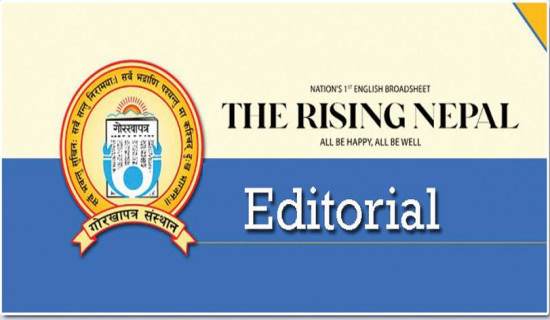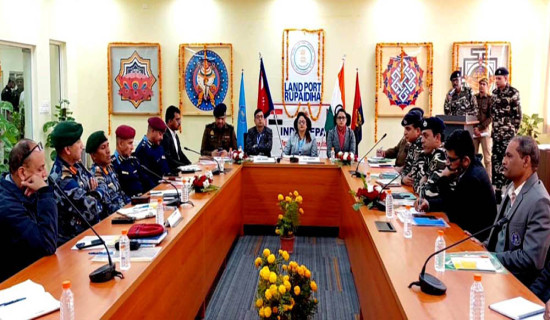- Wednesday, 15 January 2025
Empowered By Electricity
Electricity has immense power to transform individuals, society and country as a whole in powerful ways. Availability of electricity, also called power, makes possible many things. No country has ever risen to the rank of a developed status without leveraging abundant electricity. In today's world it is one of the major determinants of quality of life. How a standard of living goes on a downward spiral in a blink of an eye when power supply is abruptly cut off was laid bare in some parts of Europe when Russia in 2022 suddenly switched off its cheaply supplied gas to be used in power generation there. Today, electricity has become so indispensable to every aspect of our living that without it, our life would practically come to a screeching halt.
Nepal has been making remarkable strides in power generation in recent years, reaching the stage of being a fully electrified country where a 99 per cent of its people have access to electricity. From less than 1000 megawatts (MW) about a decade ago to about 3,000 MW now, the installed capacity of our hydropower generation has made a giant leap. Eight years ago in 2015/16 fiscal year, only 58 per cent of the population had access to electricity from the national grid. The number of customers of electricity has jumped to 5.935 million from 2.97 in the 8-year period. The annual consumption of electricity has risen from 3.72 billion units to 10.23 billion units, with per capita consumption increasing from 131 units to 400 units.
At the same time, there's one more major progress that has freed us from persistently nagging headache: free from crippling load-shedding. Some years ago when the Nepal Electricity Authority (NEA) set out on its mission to addressing the challenges facing the electricity generation and distribution systems, the country has become able to enjoy load shedding-free days except few occasional power outages. This is a testament to how good leadership can make change happen despite daunting challenges.
The growing generation has also enabled the Authority to provide free electricity to poor households as well as the settlements inhabited by marginalised population like Chepang, Musahar and landless squatters, among others. The abundance has also paved the way for our streets in all major cities to get illuminated through smart lights, adding to their beautification and easing navigation at night. As domestic consumption of electricity increases, one incredibly quiet revolution is unfolding in the streets: electric vehicles (EVs) are taking over the roads. This is not only saving us millions of dollars on petroleum fuel imports, but helping us clean up our air. To accelerate this trend, the Authority has constructed and brought into operation 62 charging stations while more than 400 charging stations built by the private sector are in service.
What's more, the NEA has also succeeded in significantly preventing electricity leakage and in building more efficient transmission system by building more substations, enabling it to earn billions in profit and allowing it to spend the money in new ventures to increase the generation even more. This is a remarkable feat given that a decade ago, it had accumulated debt amounting to billions of rupees. The authority is also gearing up to export electricity to Bangladesh in addition to India. By 2035, the transmission line networks capable of exporting 20,000 MW are under construction.









copy-original-thumb.jpg)







